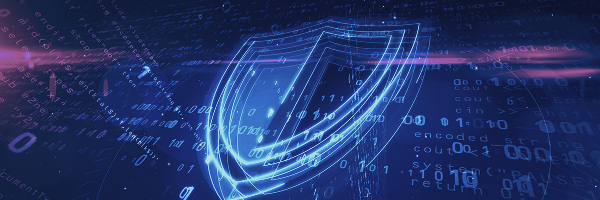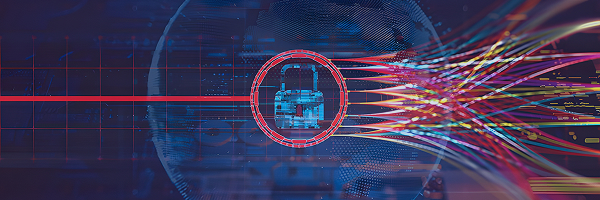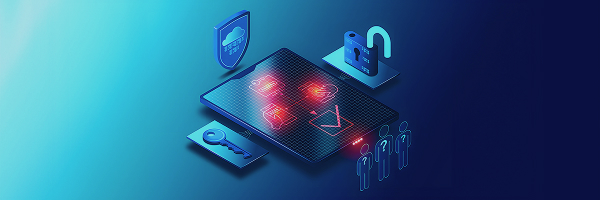Your message has been sent.
We’ll process your request and contact you back as soon as possible.
The form has been successfully submitted.
Please find further information in your mailbox.


A recent study by McKinsey & Company found that 73% of global banking interactions now happen through digital channels. The message for banks? Step up or get left behind.
Digital banking is here to stay for good, and it’s only getting bigger. Just look at the numbers: the global digital banking market is projected to hit $79.4 billion by 2030. The competition is fierce, and success comes from leading the charge, not just keeping up.
In this article, we’ll dive into the latest trends in digital banking to help you stay ahead. So, stick around — we’ve got all the insights you’ll want to bring up with your CIO at your next weekly meeting!
GenAI is being used to analyze large datasets, improve decision-making, and power AI-driven services and credit assessments.
Open banking has become more flexible, which gives consumers greater control over their financial information.
As open finance expands to include more data types, blockchain, AI, and DeFi are used to enhance security and prevent fraud.
Embedded finance is integrating financial products like loans, insurance, and investments directly into non-financial platforms and apps.
There is a growing focus on strengthening cybersecurity measures to protect against increasing cyber threats and data breaches.
Digital-only banks, or neobanks, are growing rapidly, offering financial services exclusively through online platforms and mobile apps.
There is an increasing focus on sustainable and ethical banking, with financial institutions prioritizing green investments and aligning with ESG criteria.
Robo-advisors are being widely adopted to automate investments and provide personalized financial advice and portfolio management.
Composable banking allows banks to create flexible, customizable financial products by integrating modular services via APIs.
Super apps become more popular, combining multiple services like banking, shopping, and messaging into one integrated platform.
Agentic AI enables systems to act independently and continuously improve through learning.
The tokenization is expanding, making financial assets more accessible and liquid.
GenAI’s capacity to analyze extensive datasets, detect intricate patterns, and deliver valuable insights can transform decision-making processes. In 2025, its applications in digital banking will be even more impactful, encompassing algorithmic trading, credit risk assessment, and the growing adoption of AI-powered chatbots.
According to recent research by SAS and Coleman Parkes, 90% of banking leaders have allocated budgets for GenAI projects in 2025, which signals their commitment to the vast opportunities this tech unlocks — from fraud detection to hyper-personalized customer experiences and smarter risk management.
The future of GenAI in banking is closely linked to explainable AI (XAI) as financial institutions push for both innovation and transparency. It’s not just about making smarter decisions, it’s about making sure those decisions make sense to humans. Banks and regulators won’t settle for AI that just spits out results; they’ll want models that can explain the “why” behind their choices in a way that’s clear and easy to understand.
By combining GenAI’s predictive power with XAI’s transparency, we’re heading toward a future where AI-driven banking isn’t just faster and more efficient — it’s also more trustworthy, accountable, and aligned with ethical standards.
One of the big digital banking trends for 2025 is open banking — a model that lets third-party apps access financial data from banks using APIs. It’s been growing fast and shows no signs of slowing down, with even more developments expected to make it smoother and more accessible in the coming year.
For example, open banking brings everything under one roof with account aggregation tools like Plaid, Tink, and Nordic API Gateway, letting customers see all their accounts — from payments to credit cards and investments — in one spot. Another great example is personal finance management (PFM) apps like Spiir, Yolt, and Mint, which give users a clear picture of their finances and help them keep their spending in check.
The future of open banking in the U.S. is taking shape with the CFPB’s Final Rule under Dodd-Frank Act Section 1033, announced on 22 October 2024. Starting 1 April 2026, the largest financial institutions will begin phasing in data-sharing requirements, giving consumers and their authorized third parties access to financial data.
With Payment Services Directive (PSD) 3 scheduled to roll out in 2026, open banking in the EU is set to continue evolving. Together with the Payment Services Regulation (PSR), they aim to streamline and standardize open banking practices across the region. These updates are expected to create a more consistent and user-friendly experience for consumers and businesses alike.
One of the biggest shifts coming to open banking in the UK is the Financial Conduct Authority (FCA) and the Payment Systems Regulator (PSR) planning to set up Open Banking Limited, a new independent body that would oversee the rollout of Variable Recurring Payments (VRPs). Unlike old-school direct debits that take the same amount every time, VRPs would allow approved payment providers to handle customizable transactions — perfect for utilities, subscriptions, and even savings automation.
Digital banking trends such as open finance and open banking are interconnected. Open banking allows consumers to share data from their bank account with permission, but open finance goes a step further. It includes a broader range of data, like loans, investments, and pensions. Plus, it integrates data more extensively with non-financial sectors like healthcare and government.
In open finance, blockchain keeps transactions secure and transparent with smart contracts and decentralized identity checks, while DeFi apps make lending, tokenized assets, and cross-border payments faster and cheaper by cutting out the intermediaries. AI and ML step up fraud detection, automate compliance and refine credit scoring, which makes financial services safer, smarter, and more accessible in an open ecosystem.
Now that the Digital Operational Resilience Act (DORA) is officially in effect (as of January 2025), open finance is facing tighter security rules and stronger oversight — especially when it comes to third-party tech providers. This means financial platforms will need to step up their resilience game, making sure they can handle cyber threats and disruptions without skipping a beat.
Looking ahead, we can expect greater transparency, reliability, and trust in open finance across the EU, with stronger protections against cyber risks and a more stable digital financial ecosystem that balances innovation with regulatory compliance.
Embedded finance isn’t just about payments anymore — it’s changing how we get paid, book trips, and run businesses. In 2025, everything from payroll and travel platforms to B2B marketplaces is baking financial services right into the experience. Employees can now invest part of their paycheck automatically or get paid whenever they want, no more waiting for payday. Accounting tools like QuickBooks and ERPs like SAP help handle invoicing, cash flow, loans, and supplier payments on autopilot, so businesses can stay on top of their finances without even thinking about it.
Embedded finance is projected to reach a market value of $7.2 trillion by 2030, and an overwhelming 92% of businesses plan to implement it within the next five years. A notable shift is expected in banking-as-a-service (BaaS) as new regulations tighten the market, reshaping how non-bank companies offer financial products.
PSD3 will introduce stricter compliance requirements in the EU for non-bank financial providers, affecting FinTechs that rely on BaaS for embedded financial services. Meanwhile, in the US, the Consumer Financial Protection Bureau (CFPB) is set to roll out new regulations on embedded credit and lending, with a particular focus on Buy Now, Pay Later (BNPL) models to address consumer protection concerns.
As a result, banks and licensed institutions will take on a bigger role, shifting embedded finance away from FinTech-only solutions and reinforcing the need for stronger regulatory oversight and compliance frameworks.
As we dive into 2025, it’s clear that cybersecurity is more critical than ever for financial institutions. Cybercriminals are getting smarter and using much more sophisticated tactics to infiltrate financial systems. I’m talking about advanced persistent threats (APTs) — targeted, long-term cyberattacks that are designed to steal sensitive data or throw a wrench in operations. It’s a real game of cat and mouse.
To keep up, many banks and credit unions are turning to cybersecurity as a service (CaaS). Instead of trying to handle everything in-house, which can be a huge drain on resources, they’re outsourcing key parts of their cybersecurity like threat detection, vulnerability management, and incident response.
Though cybersecurity has always been a top priority, and banks have continuously adopted advanced tools and measures like encryption, MFA, and AI-driven threat detection, I’d like to highlight the technology gaining more traction in 2025 that promises to take banking cybersecurity to the next level.
ZTA is quickly becoming essential for cybersecurity because it constantly checks who’s accessing what, making sure no one — inside or outside the network — is automatically trusted. With remote work, cloud computing, and IoT devices opening up more potential weak spots, ZTA provides crucial protection against cybercriminals and insider threats. According to Gartner, 60% of businesses will adopt zero-trust as their foundational security approach.

PETs are becoming a game-changer for banks looking to protect sensitive customer data without exposing it. With tools like homomorphic encryption and secure multi-party computation, banks can analyze encrypted data without ever needing to decrypt it. PETs also include methods like data masking and anonymization to help banks protect customer information while still gaining valuable insights.

As quantum computing advances, traditional encryption methods are increasingly at risk from their immense power. That’s why QRC is rapidly emerging as a vital trend in banking cybersecurity. Banks are adopting encryption algorithms specifically designed to withstand the threat posed by quantum computing and ensure their security systems are future-proofed.

In 2025, AI is enhancing MFA by analyzing user behavior and triggering extra authentication when needed. Continuous authentication monitors activity throughout sessions, quickly spotting suspicious behavior. Biometrics is improving with AI-powered voice recognition, and neurotechnology-based authentication is on the rise, allowing banks to verify identity using brainwave patterns.

DLT is transforming banking security by distributing transaction data across multiple locations, which makes it nearly impossible for hackers to alter past records or manipulate data. Additionally, blockchain-based identity solutions are providing banks with a more secure way to authenticate users through decentralized digital IDs, significantly reducing the risk of identity theft or fraud.

ZTA is quickly becoming essential for cybersecurity because it constantly checks who’s accessing what, making sure no one — inside or outside the network — is automatically trusted. With remote work, cloud computing, and IoT devices opening up more potential weak spots, ZTA provides crucial protection against cybercriminals and insider threats. According to Gartner, 60% of businesses will adopt zero-trust as their foundational security approach.

PETs are becoming a game-changer for banks looking to protect sensitive customer data without exposing it. With tools like homomorphic encryption and secure multi-party computation, banks can analyze encrypted data without ever needing to decrypt it. PETs also include methods like data masking and anonymization to help banks protect customer information while still gaining valuable insights.

As quantum computing advances, traditional encryption methods are increasingly at risk from their immense power. That’s why QRC is rapidly emerging as a vital trend in banking cybersecurity. Banks are adopting encryption algorithms specifically designed to withstand the threat posed by quantum computing and ensure their security systems are future-proofed.

In 2025, AI is enhancing MFA by analyzing user behavior and triggering extra authentication when needed. Continuous authentication monitors activity throughout sessions, quickly spotting suspicious behavior. Biometrics is improving with AI-powered voice recognition, and neurotechnology-based authentication is on the rise, allowing banks to verify identity using brainwave patterns.

DLT is transforming banking security by distributing transaction data across multiple locations, which makes it nearly impossible for hackers to alter past records or manipulate data. Additionally, blockchain-based identity solutions are providing banks with a more secure way to authenticate users through decentralized digital IDs, significantly reducing the risk of identity theft or fraud.

Looking ahead beyond 2025, the blending of cyber and fraud prevention — what’s being called Cyber Fraud Fusion (CFF) — is set to shake up the financial services world. This approach brings together teams from cybersecurity, identity management, and fraud detection to create smarter, more comprehensive ways to protect consumers. According to a report from NCC Group, we’re already seeing the early signs of this shift in banking, and in the next five years, we can expect a major overhaul in how financial institutions operate.
The global neobanking market was valued at $143.29 billion in 2024. From there, it’s set to grow rapidly, reaching $210.16 billion in 2025 and an impressive $3,4 trillion by 2032, with a compound annual growth rate (CAGR) of 48.9% during this time.
In 2025, neobanks are shaking up cross-border payments by using blockchain and crypto for faster, cheaper transfers, cutting out traditional banks. They’re also getting serious about sustainability, offering things like eco-friendly credit cards and green investment options, which is a hit with younger, eco-conscious customers. Plus, neobanks are expanding into emerging markets, providing essential banking services through smartphones in places where traditional banking is hard to come by, helping boost financial inclusion.
In the coming years, we’ll see neobanks shake up traditional business banking by offering SME solutions that mix digital ease with business-specific features. With their modern tech, B2B banking-as-a-service will let them monetize their infrastructure by offering white-label solutions for traditional banks and non-banks to quickly roll out digital products. Neobanks will also dive into niche markets, providing financial services to underserved groups pushing for more financial inclusion. And as time goes on, we’ll see closer collaborations between neobanks and traditional banks that will blend neobanks’ digital speed with the strong infrastructure of established banks.
The future of sustainable banking is all about embracing new regulations and digital advancements. Open banking is leading the way here, rolling out digital services that cut down carbon footprint and encourage greener financial practices. Apps like Greenly and Svalna are using open banking data to help customers see their environmental impact, making it easier for them to make more sustainable choices.
Environmentally-friendly cryptocurrencies are also set to play a big role in the future of banking. As we move away from traditional cryptocurrencies like Bitcoin, which rely on energy-guzzling proof of work (PoW) systems, the focus is shifting to more sustainable options that use proof of stake (PoS) to cut down on energy use. Plus, green cryptocurrencies like Green Bitcoin, eTukTuk, and Bitcoin Minetrix are pushing the industry even further towards sustainability by focusing on clean energy and reducing energy consumption.
A robo-advisor, also known as a “robo,” is a digital brokerage account that automates the investment process. It builds portfolios with low-cost exchange-traded funds (ETFs) and offers flexibility in account types, including taxable brokerage accounts and tax-advantaged individual retirement accounts (IRAs). Options like traditional IRAs, Roth IRAs, and SEP IRAs are available to help choose the most suitable account based on financial goals.
Robo-advisors use modern portfolio theory (MPT) to build portfolios while maximizing returns and minimizing risk through diversification. MPT suggests spreading investments across different asset classes to reduce the impact of market fluctuations and maintain steady portfolio growth.
According to IMARC Group, the global robo-advisory market can reach $92.2 billion by 2033, reflecting a CAGR of 24.33%.
While robo-advisors aren’t likely to replace human consultants anytime soon, a hybrid approach that combines digital algorithms with a human touch brings big benefits. This mix boosts digital customer service and lets advisors spend more time building client relationships and offering strategic advice.
In 2025, composable banking is making waves in digital banking technologies by letting banks build their services in a much more flexible, customizable way. Instead of sticking with a one-size-fits-all system, banks are tapping into modular components from external partners to enhance their tech setup. APIs are the key here, connecting everything smoothly and allowing banks to mix and match different systems and services.
What makes composable banking so powerful is how it lets banks stay nimble. If a certain service isn’t resonating with customers anymore, they can easily swap it out without tearing everything down. This ability to pivot quickly is crucial as the market keeps shifting.
Looking ahead, composable banking will likely become the standard for digital-first financial services. The growing ecosystem of third-party providers and FinTech partnerships will fuel further progress and make composable banking essential for banks looking to stay competitive. Managing risk and compliance will also become easier, thanks to better modular solutions that help banks adapt quickly to regulatory changes. Finally, composable banking will help democratize financial services and make them more accessible and tailored to a broader range of customers.
In the financial world, a super app combines all sorts of financial services into one handy mobile app. Instead of downloading separate apps for banking, investing, payments, insurance, and financial planning, a financial super app puts everything in one place.
Key features of FinTech super apps in 2025:
The future of financial super apps could see them expanding more into Western markets. However, Western consumers are used to using dedicated apps for specific needs — like Instagram for photos, Discord for chatting while gaming, and Venmo for sending money. Because of this established habit and existing competition, we might see niche-specific super apps in the West rather than the all-in-one super apps popular in Asia.
Agentic AI is becoming one of the key trends in digital banking, surpassing GenAI by enabling autonomous decision-making, learning, and collaboration. Unlike GenAI, which relies on human prompts, agentic AI can independently perceive, reason, act, and improve over time using networks of agents.
In banking, agentic AI is driving two main paths: internally, it automates routine tasks like data entry, compliance checks, and predictive modeling for trading and risk management. Externally, it enhances customer relationships through automated help desks, personalized investment advice, and more.
These innovations aim to boost efficiency and cut costs. As Citigroup highlighted in its January 2025 report, agentic AI is set to power the “Do It For Me” economy, potentially having an even greater impact on the financial sector than the internet era.
Even though agentic AI is still in the experimental phase, references to it in corporate documents and press articles have surged 17 times in 2024 alone, and we expect this to skyrocket. As agentic AI continues to develop, it’s going to shake up the way we work. Tasks that are usually outsourced to contractors or third parties are likely to be handled more and more by AI systems, changing the way we approach work.
For the banking industry — one of the most tightly regulated sectors out there — finding the right balance between embracing agentic AI and staying on top of regulations will be a major challenge. How financial services integrate AI while making sure security, privacy, and ethical standards are upheld will be key to how this tech shapes the future.
Financial asset tokenization is gradually gaining traction, with significant acceleration expected as network effects build momentum. In 2025, it is anticipated that certain asset classes will achieve meaningful adoption, defined as surpassing $100 billion in tokenized market capitalization by the end of the decade. Leading the charge will likely be asset classes such as cash and deposits, bonds and exchange-traded notes (ETNs), mutual funds, exchange-traded funds (ETFs), as well as loans and securitization. Adoption rates for these assets are already showing substantial progress, driven by blockchain’s ability to increase efficiency, create value, and enhance regulatory feasibility.
On 9 January 2025, the OECD published a new Policy Paper on the Tokenization of Assets in Financial Markets, highlighting key challenges in its adoption. These risks include cybersecurity threats, pseudonymity, AML/CFT concerns, and vulnerabilities in smart contracts. Additionally, existing regulatory frameworks may struggle to address these unique risks due to differences between DLT-based finance and traditional systems, leading to potential enforcement gaps.
Moving forward, regulators will play a crucial role in updating policies to make sure they are adaptable and robust enough to manage these emerging risks. More refined regulations that balance innovation with security will help create a more integrated, transparent, and efficient financial market ecosystem as tokenized assets continue to grow.
“Adopting new tech is a game-changer for the ever-evolving banking sector. Bringing in new tech in your operations can make everything run smoother, give customers a better experience, and tighten up cybersecurity. So, why not jump on board? Embracing these digital banking innovations helps you stay competitive and keep up with the growing needs of digital-savvy customers.”

Dzianis Kryvitski
Delivery Manager in FinTech
Digital banking technologies are advancing quickly, with new developments happening all the time. Traditional banks need to stay on top of these changes to remain relevant, while banks that are already digital should focus on strengthening their offerings, managing security risks, and providing smooth, intuitive services. Whether you’re just starting to go digital or already there, Innowise can help you build the right tech to stay ahead.
AI helps banks to up their game in detecting fraud and making more accurate financial predictions. It also helps them cut down on risks, save money on old systems, and streamline processes that used to be really time-consuming and manual.
Blockchain is transforming banking by boosting security, speeding up transactions, and cutting costs. Plus, it offers quicker and cheaper cross-border transactions, making the whole process smoother and more efficient.
Open banking allows third-party developers to access financial data from traditional banks through APIs. It makes financial services easier to access, allows for instant transactions, and encourages partnerships between banks and FinTechs.
In 2025, banks are stepping up their cybersecurity game to counter the growing threats. They're moving towards passwordless authentication and using biometric techs like fingerprints and facial recognition to make it harder for fraudsters to succeed.













Your message has been sent.
We’ll process your request and contact you back as soon as possible.

By signing up you agree to our Privacy Policy, including the use of cookies and transfer of your personal information.